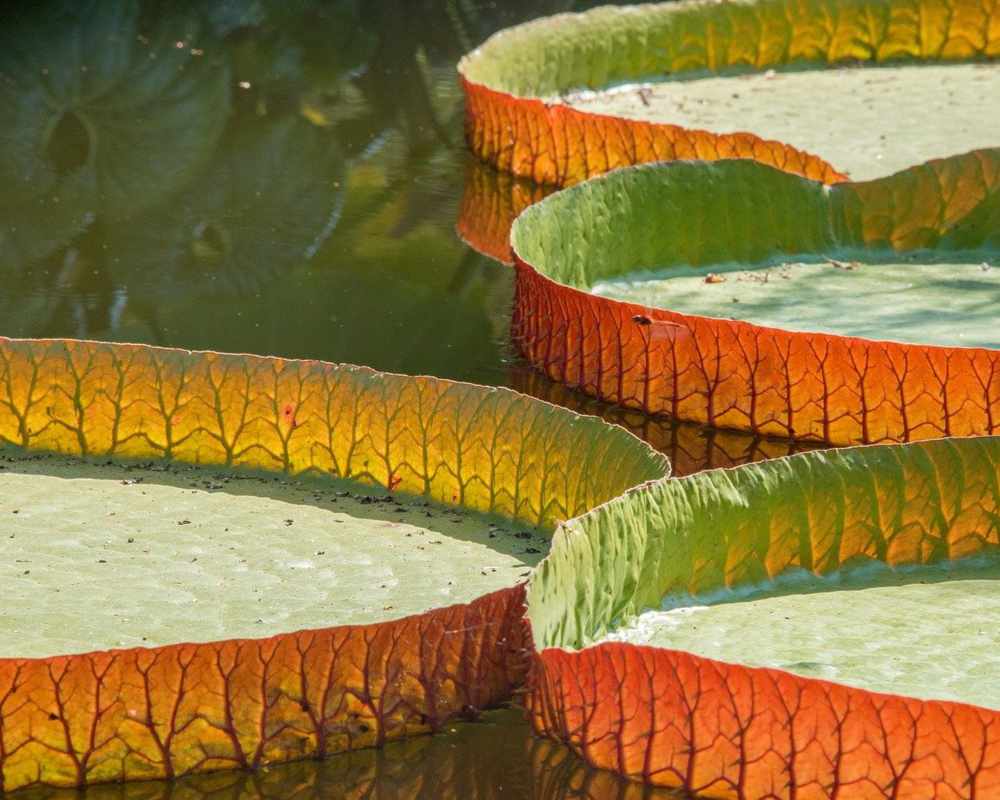Philip Aubury became the Director of the Birmingham Botanical Gardens in 1987, from a previous career in local government. He remained Director for 20 years, and his presentation to our Monday meeting covered the history of Birmingham Botanical Gardens from its inception to the early years of this century.
The historical inception and development of the Botanical Garden very much follows and mirrors the growth of Birmingham and so many industrialising cities in 1829. A group of wealthy Birmingham industrialists and philanthropists joined together to enjoy the increasing fashion for gathering and exhibiting the new plants, flowers, trees and shrubs which were being introduced into this country. At the time there was a relatively narrow range of horticulture native to this country, but it was also a time when wealthy individuals were beginning to travel to Europe and the East for pleasure, and experiencing planting of such diversity and colour that they began actively to return from their travels with plants, trees and ideas; also, plant hunting itself became big business.
The original planning began in 1829 and, three years later in 1932, on a 15-acre site formerly Holly Bank Farm, Birmingham Botanical & Horticultural Society, its original title, became a private garden for subscribers and guests only. The Edgbaston site is part of, and leased from Calthorpe Estate.
John Claudius Loudon, a notable designer of the day, created a design for the site which included an ambitious glasshouse, to be built in glass and metal. This was thought too expensive and a much simpler glasshouse, (and much less impressive, according to Loudon) was installed, and this structure still forms one of the original images of the gardens.
Financial problems eventually forced the trustees to change the terms of the original Rules and open the gardens to members of the public for viewing at limited times for an entrance fee. The initial misgivings were allayed when the finances were seen to improve. To actively encourage outside visitors, sites for archery and lawn tennis were created. The lawn tennis courts were laid out on the archery field originally, and the rules set into practice at that time became accepted worldwide and are still in use today. These activities became the famous Archery and Lawn Tennis Association which still operates today on a neighbouring site. Current membership of the Botanical Gardens is by an annual subscription (today £45 for adults and £30 for seniors) or, alternatively, entry by a day ticket, obtained online or at the door.
As the decades progressed, the site added a zoological section, with memories of bears in cages and birds in aviaries, with peacocks roaming freely. In 1961, a derelict allotment section became the “Gardening Club with Percy Thrower” for the weekly BBC TV programme (in black and white).
The original glasshouse frontage was extended by two wings in mid-20th century and this new extended space included the Exhibition Hall which hosted Plant Fairs, craft fairs and antique shows. The elegant space became very popular for equally elegant weddings and other celebrations, with the wonderful, large sprung dance floor and raised dais for dancing to a good-sized orchestra. The space also became notable for weekly dances and singing groups.
When Philip Aubrey became director, it a time of reduced incomes and diminished attendances at all the events, all in common with the financial problems of the country at the time. However, his team made the decision to bring the Botanical Gardens into a more modern format, but of course this required investment, and he was successful in applying to Birmingham City Council for financial support which came in the form of a £1 million grant and a £500,000 interest-bearing loan.
Modernisation and improvements provided a new entrance and gift shop first of all. Then work began on a plan for the infrastructure. The Tropical House was rebuilt in 1991, the 1871 Subtropical house became the Palm House, the Mediterranean House created to display the citrus trees and the Arid Garden displayed the cactus and succulents. Outside, the almost derelict bandstand, once the scene of many sunny Saturday afternoon picnics and Sunday afternoon brass band shows, was brought back to splendour, and became again an outside magnet for music, comedy and dramatic performances, watched as part of the Summer Socials. In 2020 the Alpine house was restored and restocked, and in 2021 the Alpine Yard was also brought back to display standard.
The Study Centre was built in 1999 and the Birmingham Botanical Education Network was founded to offer training in gardening, and plant and food awareness to school children, and was the site of the First National Congress promoting this philosophy.
During the Aubury years the Rock Garden and Fountain were restored; the Butterfly House, Fern Walk, Sensory Garden and Rose Garden and Parterre also became much loved areas on the site. The Oriental Garden is a particular love of Mr Aubury, and now houses the National Bonsai Collection opened at the time by the Japanese Ambassador.
In 1998, Birmingham was selected to host the G8 Summit of World Leaders, and the Botanical Gardens was selected to host the GB Summit Banquet on 10th May. At a cost of £14,000 the terrace was repaved with York stone (better than tripping up a world leader, eh!) the gardens were all spruced up, and planting developed over the preceding months to ensure, no matter the weather, that the borders would look their very best. Bill Clinton (you remember him) insisted on a short tour, and Mr Aubury had the pleasure, and evidently it WAS a great pleasure, to escort Mr Clinton around the gardens before he took his seat for the Banquet.
Mr Aubury’s final claim was to confirm that the interest-bearing loan from Birmingham City Council has long ago been repaid in full.

